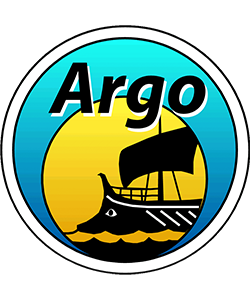What is BioGeoChemical Argo?
Biogeochemical-Argo (BGC-Argo) is the extension of the Argo array of profiling floats to include floats that are equipped with biogeochemical sensors for pH, oxygen, nitrate, chlorophyll, suspended particles, and downwelling irradiance. A Biogeochemical-Argo Mission would enable direct observation of the seasonal, to decadal-scale variability in biological productivity, the supply of essential plant nutrients from deep-waters to the sunlit surface layer, ocean acidification, hypoxia, and ocean uptake of carbon dioxide. It would extend ocean color remote sensing observations deep into the ocean interior and throughout the year in cloud covered areas. The system would drive a transformative shift in our ability to observe and predict the impact of climate change on ocean ecology, metabolism, carbon uptake, and marine resource modeling.
Development of a global BGC-Argo array is proceeding on two tracks. First, a variety of regional-scale programs are in progress around the globe, in addition to a large number of smaller scale deployments. These regional-scale programs demonstrate the capability of biogeochemical (BGC) sensors to collect climate-quality data (i.e., “time series of measurements of sufficient length, consistency and continuity to determine climate variability and change”, NRC, 2004) and the integration of the BGC data with numerical ocean models. A second track performs the planning needed to scale the various regional projects into an integrated, global program. This effort includes a variety of analyses and Observing System Simulation Experiments (OSSE) to determine the appropriate array size.
Technology challenges
Developing BGC sensors accurate and stable enough to be deployed on Argo floats is a challenge and different sensors are at different levels of readiness for inclusion on an operational BGC-Argo float. Currently, regional programs are validating sensor operation, improving sensor performance, and developing the software tools and expertise needed to operate a global network that interacts with other components of the global ocean observing system, including satellites and shipboard programs such as GO-SHIP and various time-series.
For example, analysis of the oxygen data collected by 47 US and Canadian floats that made air oxygen measurements on each surfacing demonstrates that air calibration significantly improves sensor performance. It enables oxygen measurements with accuracy comparable to that obtained in the GO-SHIP program (Johnson et al., 2015).
Multiyear records of pH made on profiling floats deployed at the Hawaii Ocean Time-series station (HOT) agree with the shipboard observations to 0.004±0.007 at the sea surface (Johnson et al., 2016). This exceeds requirements for climate quality pH measurements specified by the Global Ocean Acidification Observing Network (http://www.goa-on.org/docs/GOAON_plan_print.pdf). Bio-optical measurements of chlorophyll show no significant bias with satellite remote sensing products (Xing et al., 2011).
BGC-Argo array design
Based on OSSEs and analyses of global ocean data sets, an array of about 1000 BGC profiling floats would provide the needed resolution to greatly improve our understanding of biogeochemical processes on a global scale, to reduce the uncertainties of major ocean carbon fluxes, and to enable the significant improvement of marine resource models. With an endurance near four years for a Biogeochemical-Argo float, this system would require the procurement and deployment of 250 new floats per year to sustain it.
The lifetime cost for a Biogeochemical-Argo float, including capital expense, calibration, data management, and data transmission, is about $100,000. A global Biogeochemical-Argo system would thus cost near $25,000,000 annually. In the present Argo paradigm, the US provides half of the profiling floats in the array, while EU and Asia share the remaining half. If this continued, the US cost for the Biogeochemical-Argo system would be ~$12,500,000 annually and ~$6,500,000 for EU and Asia. This presumes that float deployments can be carried on future research cruises of opportunity, particularly the international GO-SHIP program, which provides essential validation data that is equivalent to the Argo reference database.
BGC Argo Pilot Array
Terms of Reference
Within the Argo program, the BGC-Argo mission team acts as a scientific committee of BGC-Argo national representatives, which provide recommendation and guidance for the progressive development and implementation of a BGC- Argo program in the context of the larger global Argo array. The BGC-Argo mission team will closely liaise with and report to the international Argo Steering Team. The co-chairs of the BGC-Argo Mission Team will be members of the International Argo Steering Team.
More specifically, the BGC-Argo Mission Team’s terms of reference are to:
- Develop and update the BGC-Argo science plan with respect to regional pilot projects and the implementation and evolution of the global design.
- Coordinate implementation, in particular to optimize the various national efforts.
- Interact with other mission teams (e.g. “Deep”, “Polar”) to prepare and coordinate the possible implementation of a BGC-Argo enhancements in new areas of operations for Argo.
- Elaborate “good practices” with respect to float and sensor preparation, calibration, deployments and associated in situ simultaneous measurements.
- Provide advice regarding new variables in the BGC-Argo data stream, in particular based on an evaluation of the degree of readiness of their sensors.
- In close interaction with ADMT coordinate and organize the BGC-Argo data management.
- Establish and /or strengthen interactions and exchanges with international programs (IMBER, SOLAS) or group of experts (IOCCP, IOCCG),
- Establish and develop interactions with the operational oceanography community (e.g. Marine Ecosystem Analysis and prediction task team of GODAE OceanView)
Links
Biogeochemical Argo – an extension of the Argo program to include biogeochemical observations: http://biogeochemical-argo.org
SOCCOM – Southern Ocean Carbon and Climate Observations and Modeling: http://soccom.princeton.edu
remOcean -Remotely Sensed Biogeochemical Cycles in the Ocean: http://remocean.eu
NAOS – Novel Argo Ocean observing System: http://en.naos-equipex.fr/
INBOX – Western North Pacific Integrated Physical-Biogeochemical Ocean Observation Experiment: http://www.jamstec.go.jp/ARGO/inbox/index.html

